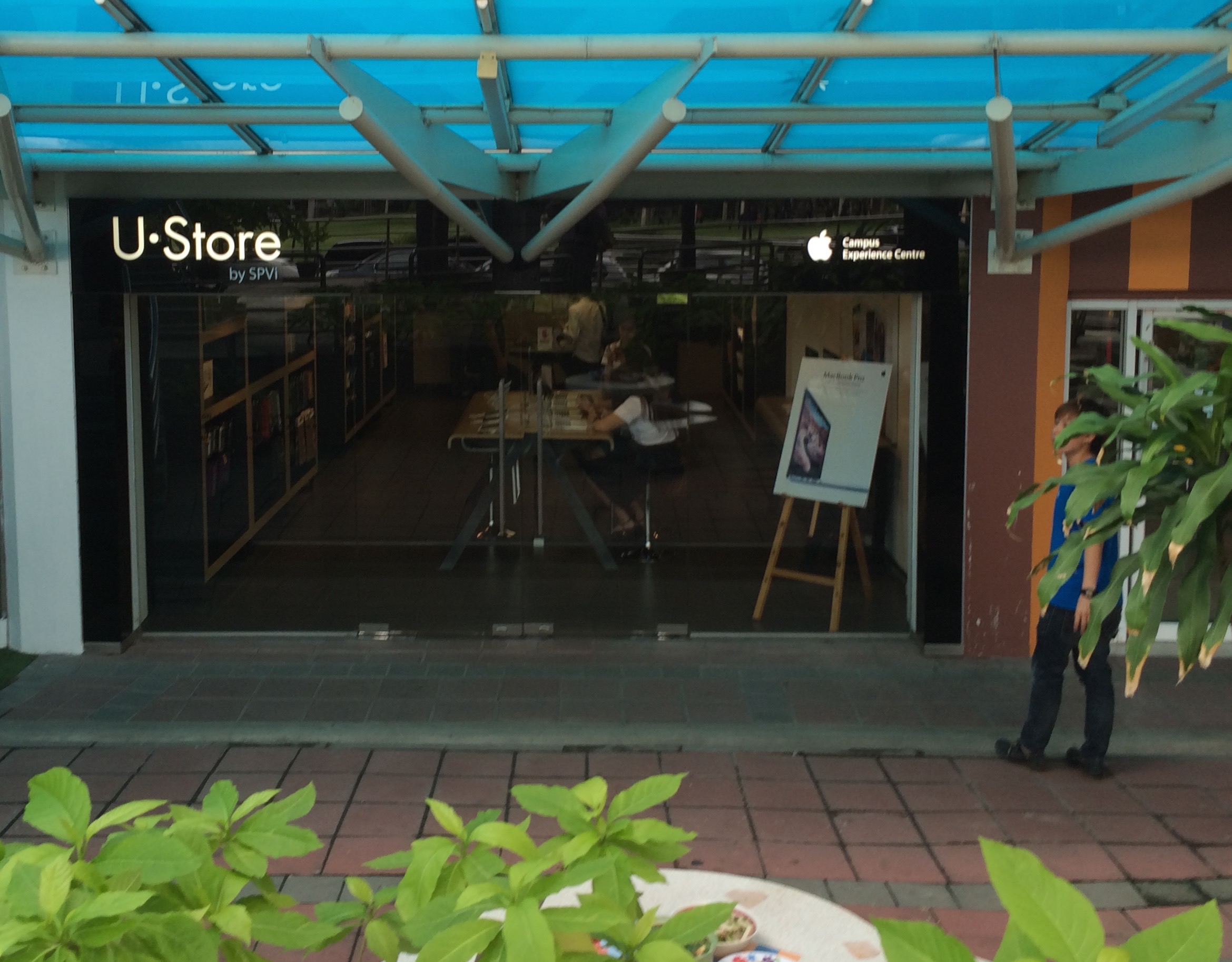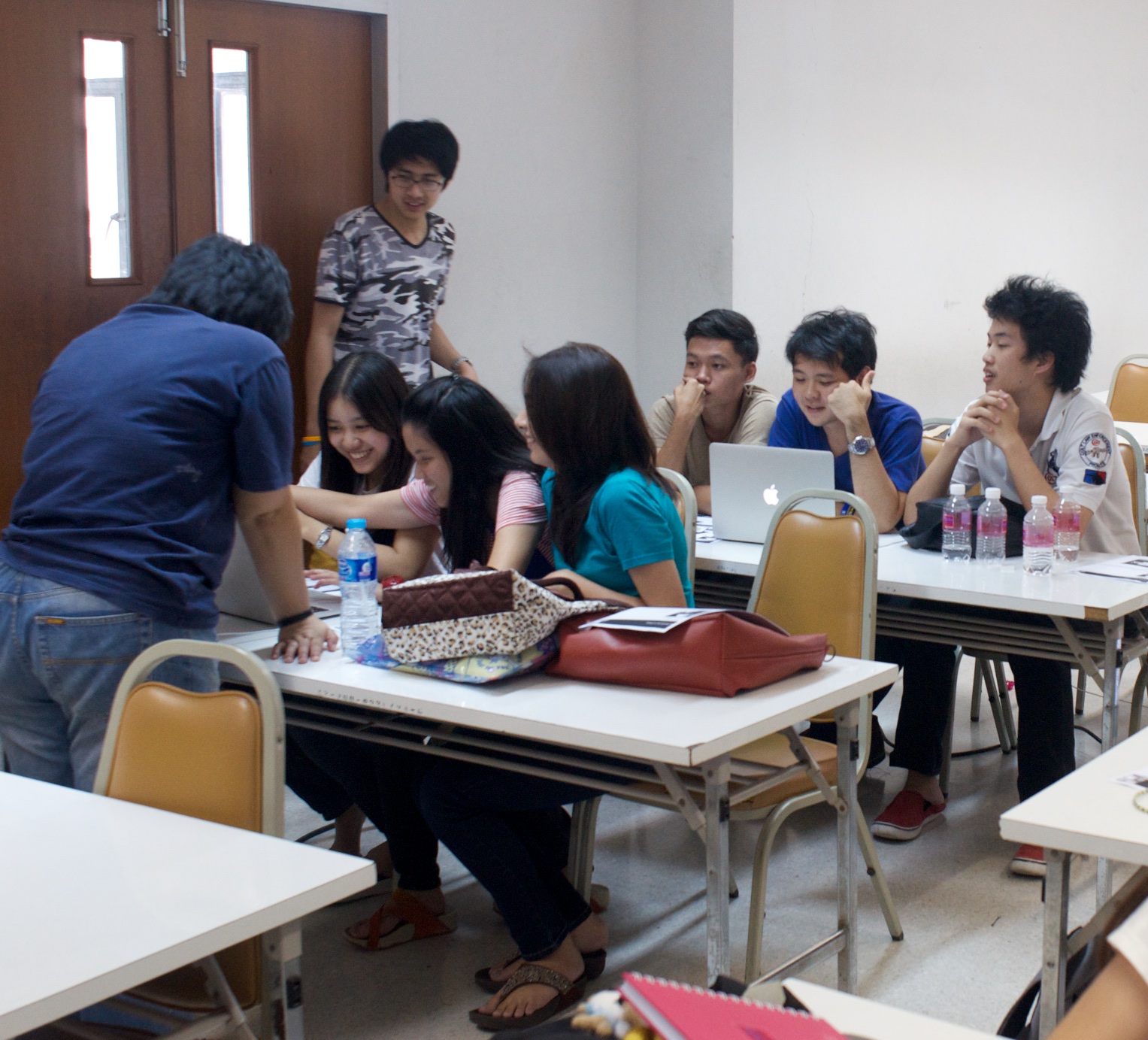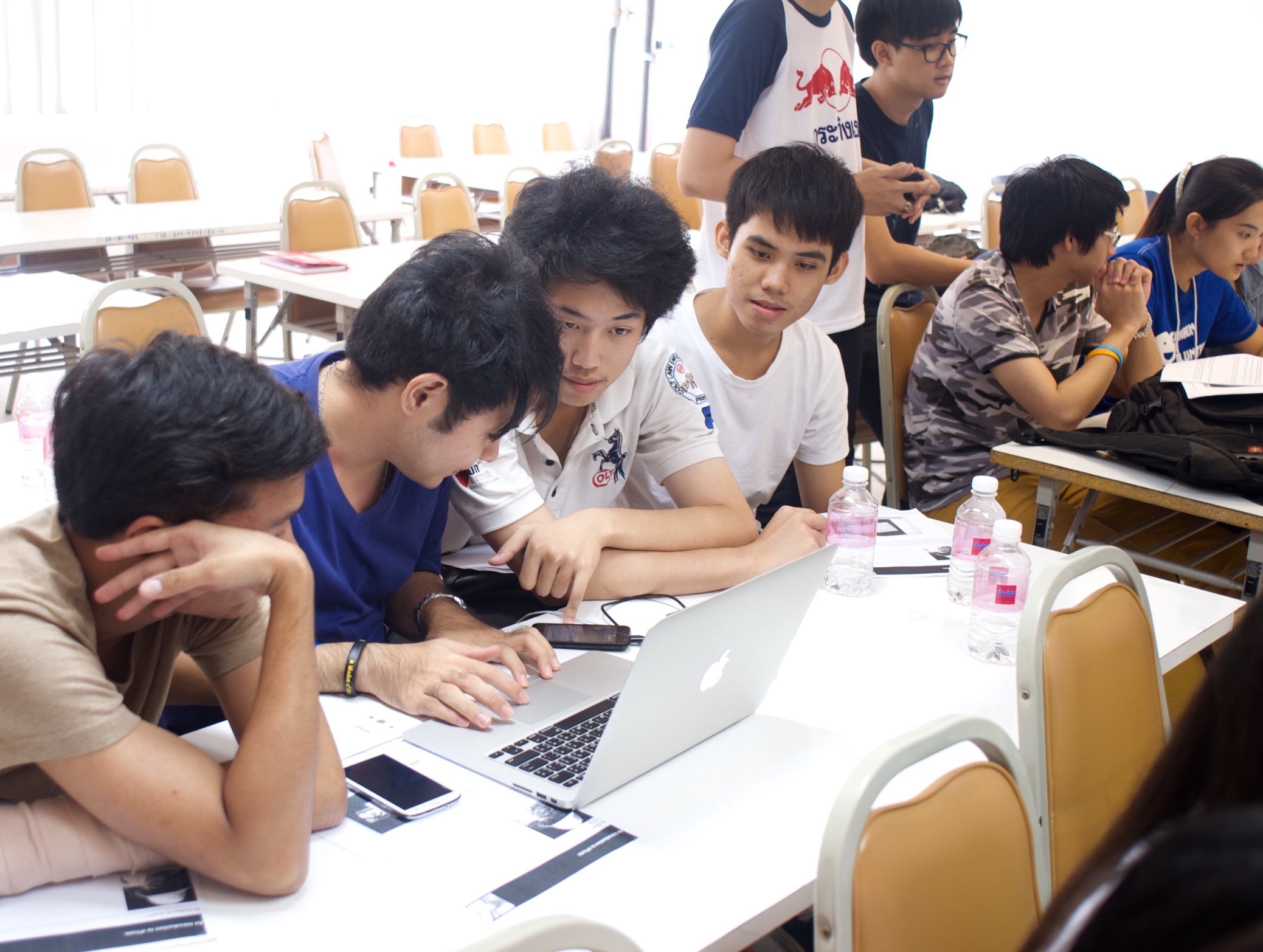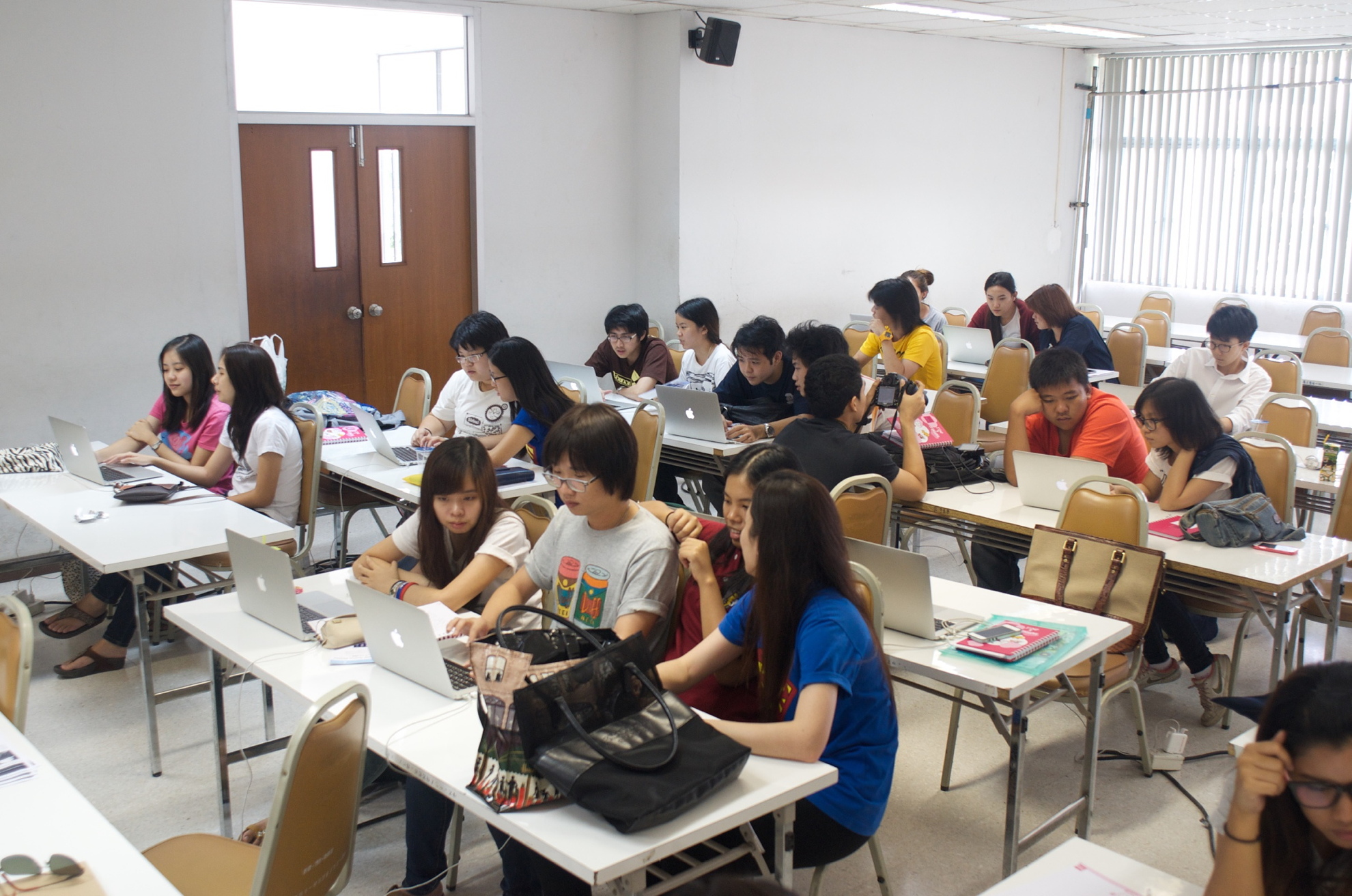MacBook Air Computers at an Intensive English Camp for Engineering Students (Bangkok Post, Life)

AMITIAE - Wednesday 6 August 2014
|
MacBook Air Computers at an Intensive English Camp for Engineering Students (Bangkok Post, Life) |
 |
|
|
By Graham K. Rogers
Using ideas from courses I already teach, adapted for an intensive format, we focused on a mix of skills to enhance confidence, including photography: they all have smpartphones. Contacts within the Faculty of Engineering arranged through SPVi - one of the local Apple resellers - to have some Macs available for the students. This worked out better than I hoped.


They tried to make sure that all students spoke English while working. The point that the helpers were not perfect English-speakers was part of the emphasis: to communicate, the students should not be worried about making mistakes. This was also brought out by a number of speakers during the first week of the camp, including SPVi's Peraphon Benhamud, who addressed the students for about 15 minutes in English. One of the things he highlighted in that presentation was the fact of iTunesU: hundreds (if not thousands) of university courses available online.

The task they were set was to create a slideshow using some of the photographs from the morning walkabout. As I have seen many times before, when those new to Macs begin to use the applications, they focus on what they want to do, not on what the software wants. We only had about 90 minutes for the task and as the slideshows were completed, I copied them onto my MacBook Pro. We ran the slideshows to conclude the day. Students love to see their own work, and the work of their friends, especially if it is displayed on a large screen. There were a number of amusing moments as photographs appeared in the slideshows.

Before the students started work, I outlined Keynote; and with a colleague we also discussed PowerPoint: they are more familiar with this currently. As the purpose was not to teach technology, we used a task which built on the previous day's efforts: using the photographs to make presentations about the Salaya campus. As before, assistance from the SPVi team was available. After a few technical points were covered by questions from the students, the creative process took over. They were able to change themes easily and develop the slides (restricted to 10 because of time). At the end, the students made their presentations, each group of students using the MacBook Air they had been working on. This was a more limited success.

Having the Macs available for the camp was a real plus as this exposed the students to an alternative to the PC (I am biased, of course) and provided uniformity. The camp personnel and students were pleased that SPVi (and Apple) were able to support such a project.
See also:
Graham K. Rogers teaches at the Faculty of Engineering, Mahidol University in Thailand where he is also Assistant Dean. He wrote in the Bangkok Post, Database supplement on IT subjects. For the last seven years of Database he wrote a column on Apple and Macs. He is now continuing that in the Bangkok Post supplement, Life. |
|

For further information, e-mail to

|

|